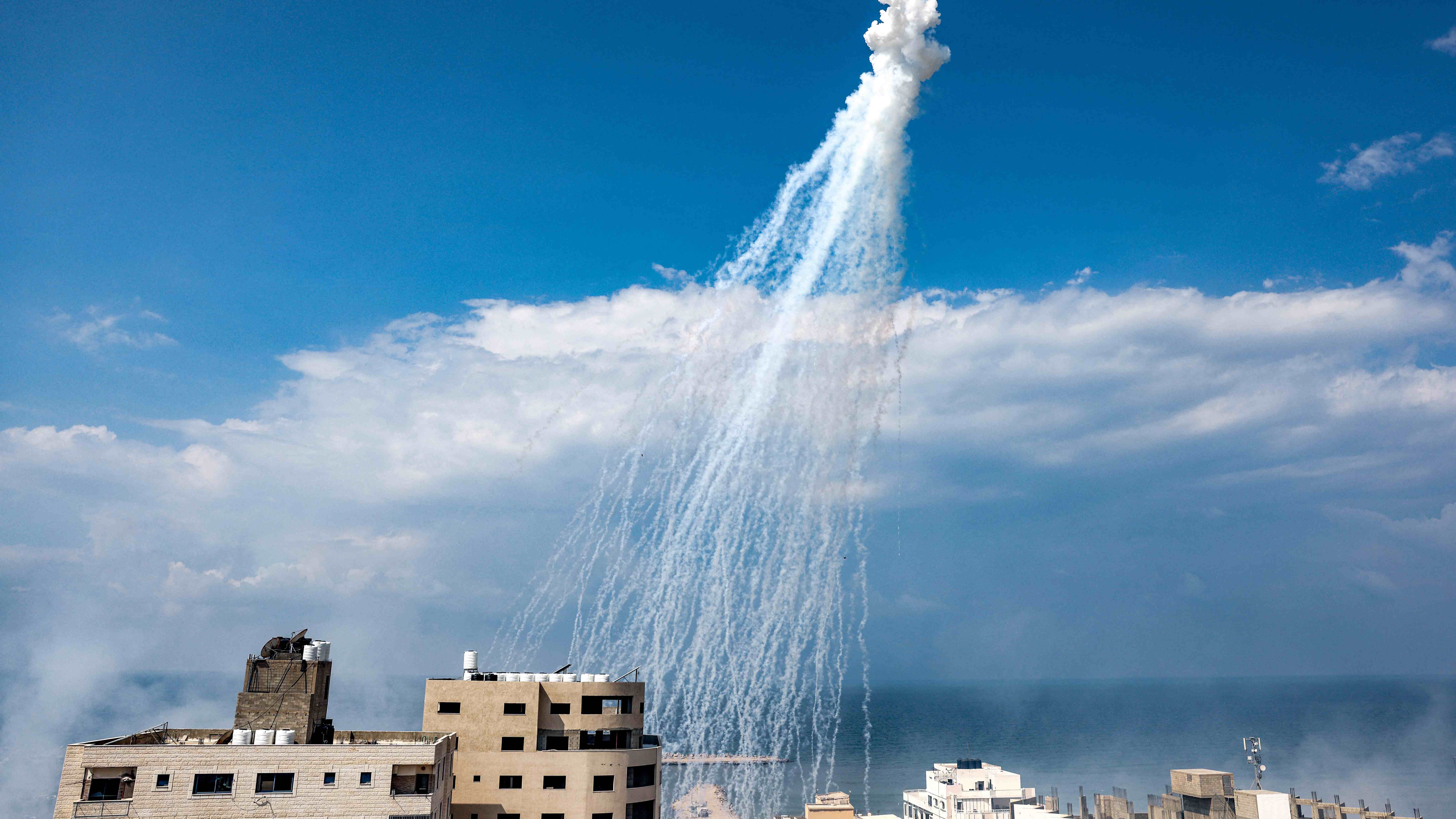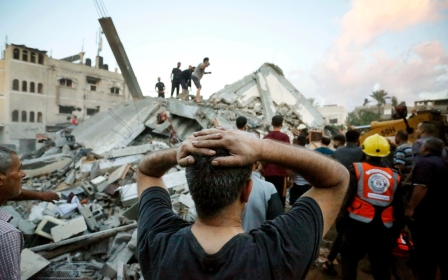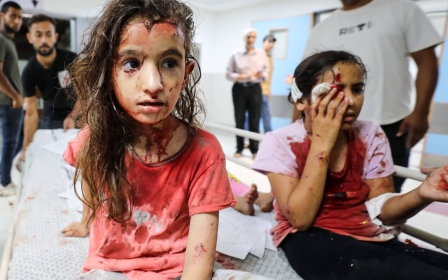Israel-Palestine war: Reports of Israeli 'white phosphorus' use in Gaza

Palestine's foreign ministry has accused Israel of using banned white phosphorus during its bombardment of Gaza on Tuesday.
The incendiary weapon was reportedly used during attacks on the al-Karama complex, a collection of residential towers in northern Gaza, which housed hundreds of families.
"Israeli warplanes and artillery use internationally #prohibited_white_phosphorus, destroying #Al_Karama neighborhood in the northwest of Gaza City with a continuous series of airstrikes," the ministry wrote on X, formerly known as Twitter, on Tuesday night.
"There are casualties and wounded, while ambulances and civil defense vehicles are unable to reach the area due to the intensity of the airstrikes and the destruction of the leading roads," the post continued.
Middle East Eye's sources on the ground reported seeing scenes consistent with past Israeli white phosphorus use in Gaza, including during the 2008 conflict. The accusations could not be independently verified by Middle East Eye.
Palestinian civil defence teams also reported the deployment of the munition in Gaza.
Journalists told Middle East Eye that a chemical they believe to be white phosphorus was also used near the Roots Hotel close to the port of Gaza on Wednesday morning.
Eyewitnesses attempted to put out the burning flames of the phosphorus on the ground by trying to put sand on top of it.
The use of white phosphorus is banned in heavily populated areas under international law. Protocol 3 of the UN's Convention on Certain Conventional Weapons "prohibits the use of weapons primarily designed to set fire to objects or cause burn injuries against civilians."
As a weapon, white phosphorus is easily ignited, difficult to put out, burns at high temperatures and can spread fire rapidly.
Al-Karama attack
According to eyewitnesses, Israeli warplanes and artillery units dropped around 100 bombs in the area while residents were still inside.
The attacks have resulted in mass fatalities, with Middle East Eye's reporter on the scene witnessing uncollected bodies lying on the street on Wednesday morning, around 12 hours after the attack first began.
"It was heinous, indiscriminate bombardment without warning," Abdelaziz Helo, a resident who survived the bombing, told Middle East Eye on Tuesday.
"People were in their homes when the bombs began raining down on the area hysterically. It turned it into a block of flame. No women, no children, no men were able to move or leave the area," he said.
The bombardment comes as Israel prepares for a ground invasion of the besieged territory, having already cut off fuel, water and food supplies to the area.
At the time of publication, at least 1,055 Palestinians have been killed by Israeli forces since Palestinian fighters launched land, sea and air raids in a surprise assault on Saturday morning. More than 1,200 Israelis have been killed since Saturday.
Middle East Eye propose une couverture et une analyse indépendantes et incomparables du Moyen-Orient, de l’Afrique du Nord et d’autres régions du monde. Pour en savoir plus sur la reprise de ce contenu et les frais qui s’appliquent, veuillez remplir ce formulaire [en anglais]. Pour en savoir plus sur MEE, cliquez ici [en anglais].





